Electricity infrastructure
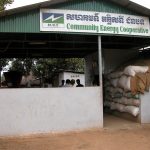
Rural energy cooperative in Cambodia. Photo by Nomade Moderne, taken on 23 March 2006. Licensed under CC BY-NC-ND 2.0The electricity distributed in Cambodia is partly generated within the country and partly imported. For many years, local generation was on a relatively small scale, and was ...
Ethnic minorities and indigenous people
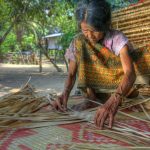
According to the Kingdom of Cambodia’s 2019 general population census, the total Cambodian population is 15,552,211 (51.31% of females).32 By 2021, the population increased to 16,589,023.33 Vietnamese, Chinese, Chams and other minorities also live in the country. Indigenous ethnic groups known as “Khmer Loeu” live ...
Higher education

Higher education, in general, refers to education beyond the secondary level. Higher education institutions (HEIs) in Cambodia can be classified into three categories: The Royal Academy, university, and college. Cambodia’s higher education consists of an associate degree, four years of undergraduate education, two years of ...
Mining

The mining sector in Cambodia is mostly undeveloped, and active mining enterprises are typically small-scale quarries producing materials for construction, such as laterite, marble, granite, limestone, gravel and sand. There is no industrial-scale extraction of minerals, although many exploration licenses have been granted to ...
Provincial and local governments
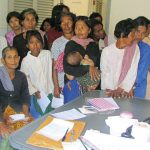
Patients are registered during the outreach screening at Vien Health Center. Photo by Community Eye Health, taken in 2006. Licensed under CC BY-NC 2.0The Kingdom of Cambodia is an indivisible state. The country’s administration at all levels and in all sectors falls under the same ...
Hydropower dams
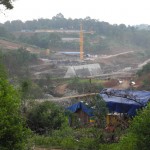
In 2003, a national sector review for hydropower was prepared by the Ministry for Industry, Mines and Energy (now Ministry of Mines and Energy) and the Cambodian National Mekong Committee (CNMC). This report identified 60 possible sites for hydropower development in Cambodia and estimated the ...
SDG 17 Partnerships for the goals
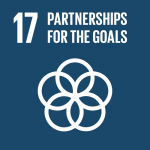
SDG 17 – “Strengthen the means of implementation and revitalize the global partnership for sustainable development” – is about bringing governments, civil society, the private sector and other actors together to help achieve the 2030 Agenda. There are 19 global targets and 25 indicators. The targets ...
Extractive industries licensing and payments
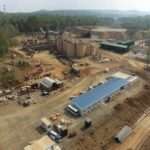
Overview of an industrial gold mine and refinery in Okvau. Photo taken from the Ministry of Mines and Energy’s Facebook Page, taken on 11 June 2021.Mineral resources are defined as “any substance, whether in solid, liquid or gaseous form, naturally originated by a geological process ...
Energy for transport

In Cambodia, petroleum is traditionally the main source of energy for transportation. The petroleum fuels used for transportation include gasoline, diesel, heavy fuel and fuel oil. ...
Budget
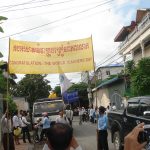
Cambodian Independent Teachers’ Association and Free Trade Union of Workers of the Kingdom of Cambodia celebrated the World Teacher Day from Cambodia. Photo by Education International, taken on 5 October 2009. Licensed under CC BY-NC 2.0Cambodia’s national budget determines state expenditures and revenues. It is ...
Red Cross
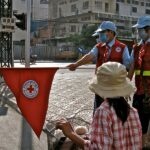
The Cambodia Red Cross (CRC) is the principal humanitarian society in Cambodia. The government has designated it as an auxiliary to public bodies offering humanitarian assistance. In addition to the national headquarters, the CRC has 25 branches.273 CRC was founded in 1955 and has worked ...
Extractive industries
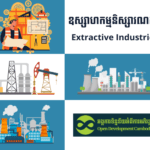
Extractive industries include mining and mineral sectors, natural gas and oil exploration, petroleum refineries, and quarrying for construction resources such as sand, stone, and gravel. Cambodia’s extractive resources have gone largely untapped, while these resources are geographically identifiable. French and Chinese geologists have been indicated ...
Disaster and emergency response funding
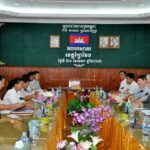
Cambodia has begun to integrate disaster and climate resilience goals into its national policies but implementation remains difficult. In the National Action Plan for Disaster Risk Reduction 2014–2018, the government prioritizes the target to: “build a resilient nation and local communities to pursue sustainable development.” ...
Mitigation
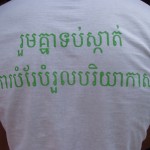
Together, fighting climate change. Photo by 350.org, taken on 12 October 2010. Licensed under CC BY-NC-SA 2.0.Clean Development MechanismThe Clean Development Mechanism (CDM), defined in Article 12 of the Kyoto Protocol, allows a country with an emission-reduction or emission-limitation commitment under the Kyoto Protocol to ...
Water pollution
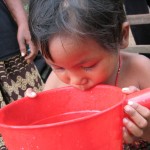
Young child drinks clean water in Cambodia. Photo by Cecilia Snyder, taken on 12 July 2003. Licensed under CC BY-NC-ND 2.0Water pollution can be defined in many different ways. Basically, it is the contamination of water when pollutants are discharged into water bodies without treatment ...
Terms and definitions
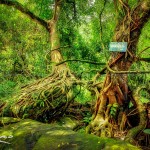
Defining and measuring forests is not an easy business. Definitions that initially sound very similar can turn out to have crucial differences. Understanding the terms is important for understanding forest use, forest cover, forest laws and policies and deforestation. ...
Non-renewable energy production
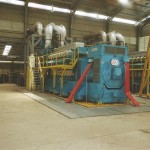
Non-renewable energy sources are chiefly fossil fuels such as coal, diesel, oil and gas. They provide most of Cambodia’s locally-produced electrical supply – in 2011 diesel and heavy fuel oil generators provided 89% of local electricity generation. ...
Forest protection

Deforestation has always been a problem in Cambodia since the 1970s, and it has aggravated inthe last decade. Some protected areas have been deforested. Between 2001 and 2018, Cambodia had lost 557,000 hectares (11.7%) of forest cover in protected areas.485 This loss has had an ...
Agricultural production
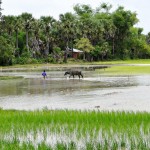
Rice field in Cambodia’s countryside. Photo by fmpgoh, taken on 15 July 2009. Licensed under CC BY-NC-ND 2.0The main products from the agriculture sector are rice, rubber, corn, vegetables, cashews and cassava. Unprocessed agricultural exports were projected to be more than 90 percent of total agricultural ...
Energy
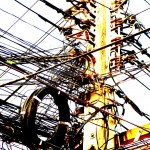
Cambodia has undergone rapid economic development in recent decades, with GDP per capita tripled between 1999 and 2013. However, mainly due to three decades of war and political turmoil which severely damaged the country’s infrastructure, the country still lacks the means required for energy sector ...



